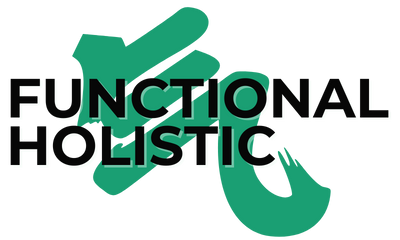From Shedding to Sprouting: The 30-Day Hair Regrowth Blueprint

Why the Right Timeline Matters, And What to Expect Week by Week.
Hair loss can feel random. One day, your hair seems fine. The next, it’s all over your brush, your pillow, your shower drain. But in reality, it’s almost never random. There’s always a reason. And more often than not, it’s not just about your scalp.
Whether you’re dealing with stress, hormonal shifts, poor sleep, or just life catching up to your system, the body eventually sends out warning signals. For many of us, especially in times of burnout, that signal is hair loss.
So, where do you start when your follicles are in retreat mode?
Not with guesswork.
Not with gimmicks.
And definitely not with a surface-only solution.
This 30-day blueprint lays out the exact recovery timeline I use with clients to help them go from chronic shedding to consistent regrowth. It’s built from a blend of modern science and Traditional Chinese Medicine (TCM), and it focuses on supporting the systems that grow healthy hair, not just chasing symptoms.
Let’s break it down, and more importantly, let’s do it in the right order.
First, A Note on What Science Says (And What It Often Leaves Out)
If you’re dealing with nonscarring, stress-related hair loss (like telogen effluvium), you’re not alone. According to a clinical review in American Family Physician, once the triggering stressor is removed and the body rebalanced, hair often resumes growing on its own.
But in real life, it’s rarely that simple.
Because by the time the shedding starts, your system is already depleted, in ways that aren’t always visible. You’re running low on digestive strength, nutrient absorption, blood quality, sleep depth, and nervous system tone.
And when those foundations aren’t repaired, regrowth stalls, or never fully comes back.
This is why most surface-level advice doesn’t work.
And it’s why I built this timeline to go beyond “remove the stressor” and actually show you how to rebuild what your hair needs at a systemic level.
Week 1: Calm the System to Interrupt the Shedding Phase
Shedding is your body’s signal that something’s off. When the nervous system is chronically overstimulated, whether from emotional stress, overtraining, under-eating, or lack of sleep, the body deprioritizes non-essential functions like hair growth.
In TCM, this pattern often shows up as Liver Qi stagnation and Yin deficiency, meaning your stress response is dysregulated, and your deep fluids (blood, essence, hormones) are taxed.
Week 2: Rebuild Blood + Nutrient Stores
Once the stress signal begins to calm, the next phase is about replenishment.
Because hair doesn’t grow from thin air. It grows from nutrient-rich, well-circulated blood.
But here’s the catch: even if your diet is solid, your digestion might not be absorbing what you’re eating. I see this all the time in clients with low energy, bloating, brittle hair, or dry skin. These are some signs that the system responsible for extracting and delivering nutrients is underperforming.
In TCM, this is tied to Spleen Qi deficiency – your body’s ability to transform food into usable fuel.
Week 3: Activate Circulation + Scalp Stimulation
Now that the body has more to work with, it’s time to get those nutrients to the follicle.
A lot of people start with this step (slathering on serums or scrubbing their scalp) but without weeks 1 and 2, it’s like watering dry soil with no roots. Once internal resources are restored, scalp stimulation actually starts to make an impact.
Week 4: Anchor the Gains with Rhythm + Recovery
At this point, the system is rebuilding, but you’re not done.
This week is about consolidating progress and keeping your system out of survival mode.
Sleep, in particular, plays a huge role here. It regulates melatonin, growth hormone, and your body’s repair mechanisms, all of which impact follicular regeneration. This is where getting getting on the right herbal routine for your body and improving your sleep cycle can make all the difference.
How to Know It’s Working (Even Before You See New Hair)
Regrowth doesn’t always show up where you expect it first, and definitely not as fast as we’d like. But there are early signs that your system is responding, even before visible hair returns.
Internally, you might notice your sleep improves, your digestion feels smoother, or your energy is more stable throughout the day. You may feel less anxious, less reactive to stress, or find yourself needing fewer stimulants to push through.
On the outside, signs often start subtle. Less hair in the brush, fewer strands on your pillow, or your scalp feeling less tight, flaky, or inflamed. Some people describe a tingling or warming sensation at the scalp, which is a sign that blood flow is improving. And often by the end of the month, you’ll spot baby hairs starting to grow in around the hairline or crown – the first visible wins.
These signs mean the deeper systems that control growth are finally coming back online. Stay consistent. This is the part where most people give up right before things start to shift.
You Can Reverse Hair Loss, But Not With Guesswork
I built this blueprint because I got tired of watching people spin in circles, trying every trending supplement or scalp product without ever addressing the systems that grow hair in the first place.
Stress-based hair loss doesn’t happen in isolation. It’s the result of deeper depletion, and that depletion requires a specific, step-by-step repair process.
If you want a clear path to follow – one that addresses your digestion, blood flow, nervous system, and sleep rhythm – I’ve put everything into a detailed, practitioner-designed digital guide:
The 30 Day Pattern Mapping™ Regrowth System
It’s the exact process I’ve used in clinic to help clients recover from stress-related hair loss naturally, effectively, and without burning out in the process.
You don’t need to do everything, you just need to do the right things, in the right order. This guide shows you how.






